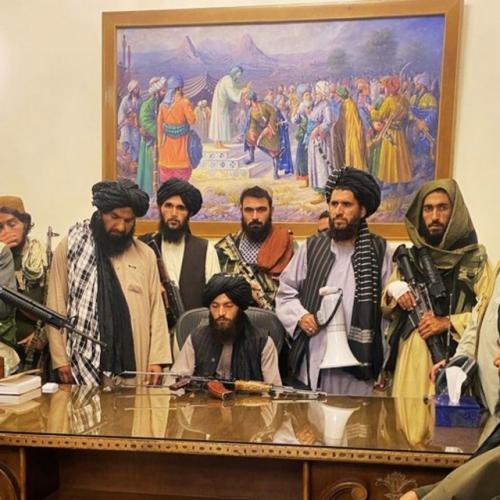Roots of the Afghan Tragedy
The inglorious American intervention in Afghanistan was not triggered by the attacks on American soil on September 11, 2001. It began in 1979 and directly led to these attacks.
- Opinión

As images of bodies falling off an American plane taking off from Kabul shock the world, the disaster in Afghanistan brings personal memories. One of my classmates at the Oriental Studies Faculty of the University of Leningrad specialized in Persian philology and would become an interpreter of Pashto, the principal language of Afghanistan. He was so good that, in the 1970s, he ended up interpreting for the Afghan king Zahir Shah.
My friend, when occasionally coming back from Kabul or Moscow, would bring Afghan souvenirs and tell me about that country, conveying images of a traditional society embarking on modernization. His impressions dovetailed with newsreels, which showed young women in short sleeves and miniskirts streaming into Kabul University, and new factories being built by Soviet-trained engineers. Of course, my friend told me, this reflected urban life while the countryside, just like in Soviet Central Asia, remained more traditional. Modernization was, as usual, encountering resistance, which, however, was mostly passive and not violent.
It all changed in the summer of 1979 when the United States began forming, arming, and training mujahideen, who opposed modernization. The initiative came from President Carter’s national security advisor Zbigniew Brzezinski. A veteran Cold War warrior, he presented it to his boss as a means to combat Communist influence and, more importantly, as a provocation that might trigger a Soviet military response. As he admitted in a 1998 interview, this was a callous calculation to draw in the Soviets and entrap them in their own “Vietnam debacle”. Brzezinski’s plan succeeded, and a few months later Soviet forces entered Afghanistan.
Thus, the United States initiated the establishment of what would later become Taliban and Al-Qaida as a bait for the Soviets. Arming Islamist militants was meant to be and became a provocation that brought about Soviet military intervention, not a reaction to it. This appeared at the time as a smart American victory against the Communist foe. No thought was given to the fate of modernization in Afghanistan or the future of the young women embarking on university careers. Brzezinski single-mindedly pursued one goal: to weaken Russia. And in the 1998 interview, when the Soviet Union had been dismantled and Yeltsin’s Russia lay enfeebled and humiliated, he said that, given the chance, he would do it again. Afghanistan was simply used as a venue for undermining the Soviet Union.
The inglorious American intervention in Afghanistan was not triggered by the attacks on American soil on September 11, 2001. It began in 1979 and directly led to these attacks. Millions of Afghan refugees, hundreds of thousands of victims, mostly Afghan, but also Soviet and NATO soldiers, and hapless office workers in the Twin Towers, constitute the price of that smart idea of Brzezinski’s. He is long dead and buried but the hubris of U.S. foreign policy adventurism is not. It is fuelled not only by his disciples that can be found today in Washington’s corridors of power. The military-industrial complex benefits from this hubris whoever the victor is. One need not be an historian or an economist to see that “forever wars” profit arms manufacturers.
Modernization implies not only new gadgets. It also means preference for rational analysis and debate. It is important to understand the entire series of events that brought about these horrific images of bodies falling from the sky. The responsibility for the Afghan tragedy lies squarely with the arrogance and impunity of U.S. foreign policy makers. Tomorrow, in need of an easy victory, they may ignite violence in another part of the world. But how to prevent this from happening is beyond the ken of an historian.
- Yakov M. Rabkin is Professor of History at the University of Montreal. His recent book is Demodernization: A Future in the Past.
Del mismo autor
- ¿Quién provocó la tragedia afgana? 27/08/2021
- Roots of the Afghan Tragedy 19/08/2021
- La ONU tiene poco que celebrar el 29 de noviembre 26/11/2012
